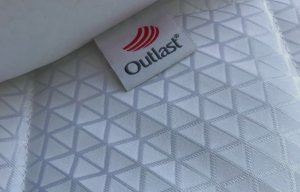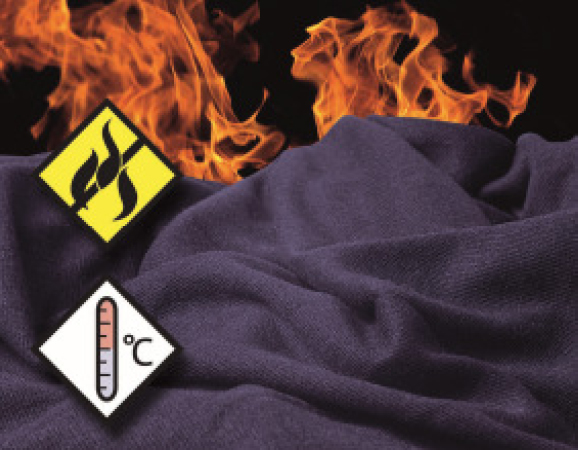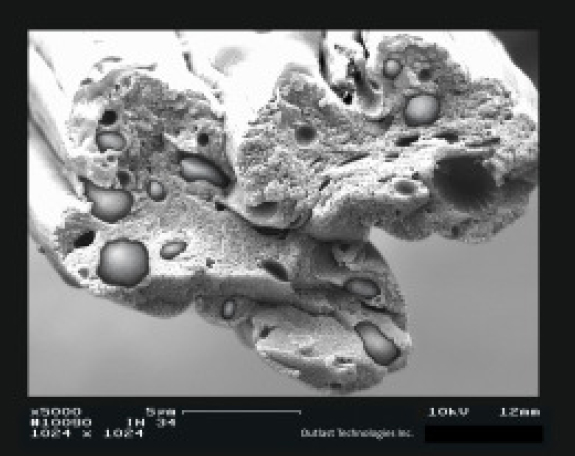
Promoting good sleep with Outlast
Outlast Technologies, Inc., Boulder/Colorado, market leader in temperature regulating phase change materials (PCMs), and Waxman Fibres Ltd, West Yorkshire/United Kingdom, are pleased to announce a new partnership. Together they developed innovative flame retardant (FR) fabrics where the FR Protex® modacrylic fibre is blended with the climate regulating Outlast® viscose fibre. The new FR fabrics are p

28th March 2011
Innovation in Textiles
|
Boulder, CO

Outlast Technologies, Inc., Boulder/Colorado, market leader in temperature regulating phase change materials (PCMs), and Waxman Fibres Ltd, West Yorkshire/United Kingdom, are pleased to announce a new partnership. Together they developed innovative flame retardant (FR) fabrics where the FR Protex modacrylic fibre is blended with the climate regulating Outlast viscose fibre.
The new FR fabrics are produced by the renowned innovative knitter A. Sampaio & Filhos – Texteis S.A., Santa Tirso/Portugal. They consist of 60% MAC Protex and 40% CV Outlast, are Oeko-Tex Standard 100 compliant and certified by the European norm EN ISO 14116 Index 3. This International Standard specifies the performance requirements for the limited flame spread properties of materials, material assemblies and protective clothing in order to reduce the possibility of the clothing burning and thereby itself constituting a hazard.
Additional requirements for clothing are also specified. Protective clothing complying with this norm is intended to protect workers against occasional and brief contact with small igniting flames, in circumstances where there is no significant heat hazard and without presence of another type of heat. The standard increases the safety of persons risking contact with heat or flame.
Because the Protex fibre is blended with the Outlast fibre the new fabrics can provide a uniquely higher level of comfort, temperature regulation and moisture management not normally associated with protective clothing. „We are proud to present another smart development for the workwear marketplace“, says Martin Bentz, Managing Director of Outlast Europe GmbH, Heidenheim/Germany. “Protex and Outlast are both well-known brands offering a high added value and also a very good service and technical support to customers.”
“We are very excited to introduce our joint Outlast/Protex product to the market”, says Greg Cluskey, Managing Director of Waxman Fibres Limited, West Yorkshire/United Kingdom. “Protex is permanently and inherently FR: safer than chemical treatments and without loss of FR performance after repeated laundering or dry-cleaning. We are happy to marry our FR fibre to the climate regulating Outlast fibre which also has no loss of the heat management performance after washing. We wanted to take the advantages of our FR technology with the functionality of the Outlast fibre to reduce stress fatigue for the wearer which is what our research has repeatedly requested for the next generation of combined protection.” Example: In a warm environment an Outlast/Protex garment keeps the skin temperature cooler and significantly reduces overheating.
 Protex fibre
Protex fibreIgnition needs flame, flame needs oxygen, fire needs fuel – remove any of these and burning cannot continue. Protex fibres, working with cellulosic partners in the blend, quickly and effectively remove the oxygen from the surface of the fabric, thus stopping the flame from spreading. It does this by producing minute amounts of inert non-combustible gases which “seal” the fabric surface from oxygen. After the removal of the flame source, flame spread is stopped.
This means that it has all the attributes of an acrylic fibre: softness, lightness and good handle as well as the added benefit of flame retardancy. This is due to the co-polymerization within the production process, involving flame retardants, which result in permanent flame retardancy. As a modacrylic gains its flame retardancy through a co-polymerization process, the attributes are built into the molecular structure – i. e. they are inherent, and cannot be washed out or worn away. This is an excellent reason for using Protex - it takes away the worry of product performance, as the flame retardancy will remain as good as on the day it was produced, and the wearer will remain protected.
Outlast technology was originally developed for NASA to protect astronauts from temperature fluctuations in space. Outlast phase-change materials (PCMs) absorb, store and release excess body heat. The principle of PCMs is simply demonstrated. Looking at PCMs two well-known technologies are successfully combined: On the one hand is the microencapsulation, as known from the chewing-gum inside which microcapsules are embedded. While chewing the shell is destroyed, and the taste is released. Another example: perfume probes in magazines. The microcapsules being destroyed while rubbing on the paper, as the smell is released.
The difference in Outlast materials: Microcapsules are also used, but the shell is stable and doesn’t get destroyed. The capsules are very tiny: Around 1,000 fit on the head of a pin (ca. 3 million per cm²). Inside the patented microcapsules, called Outlast Thermocules, substances similar to paraffin are stored, which are capable of phase change. This simple physical principle is well-known to everyone, example H2O: Water becomes ice or vapour when energy is added or taken away. PCM technology takes advantage of exactly this same law of physics. The advantages of Outlast Adaptive Comfort products at a glance:
 Absorbs excess body heat
Absorbs excess body heatEverybody’s sensitivity to temperature changes is different, which means everyone sweats or becomes chilled at different rates; quickly or slowly. But the temperature corridor in which we feel comfortable is relatively narrow: when the body core temperature of 37°C fluctuates only 2°C upwards or downwards we are subject to fever or hypothermia. Here Outlast® products help. They reduce temperature swings and influence the comfort zone efficiently. The microclimate is well balanced, one sweats less and is less chilled. You feel not too hot, not too cold, but just right®.
Outlast Technologies, Inc., a privately held U.S. corporation, is the worldwide leader in phase change materials and applications. Outlast technology is the heat management technology originally developed for NASA that enables any textile to absorb, store and release heat. Outlast technology pro-actively responds to changes in skin temperature to manage heat and reduce moisture for everyday comfort.
For over 20 years, Outlast has been committed to the development of new fibres, fabrics and coatings incorporating phase change materials, expanding the use of Outlast technology across more than 200 brands and a multitude of products in apparel, footwear, bedding, packaging and labels, and accessories. For more information, please visit
Waxman Group Ltd, West Yorkshire/UK, was established in the early 1960s and has a 50 year partnership with the Kaneka Corporation of Japan, manufacturers of Kanecaron specialist modacrylic fibres for flame retardant fabrics. Waxman Fibres & Waxman International today boast exclusive distribution rights for Kanecaron modacrylic fibres across a vast range of territories including Europe, Turkey, Israel, North Africa and the Middle East.

Business intelligence for the fibre, textiles and apparel industries: technologies, innovations, markets, investments, trade policy, sourcing, strategy...
Find out more